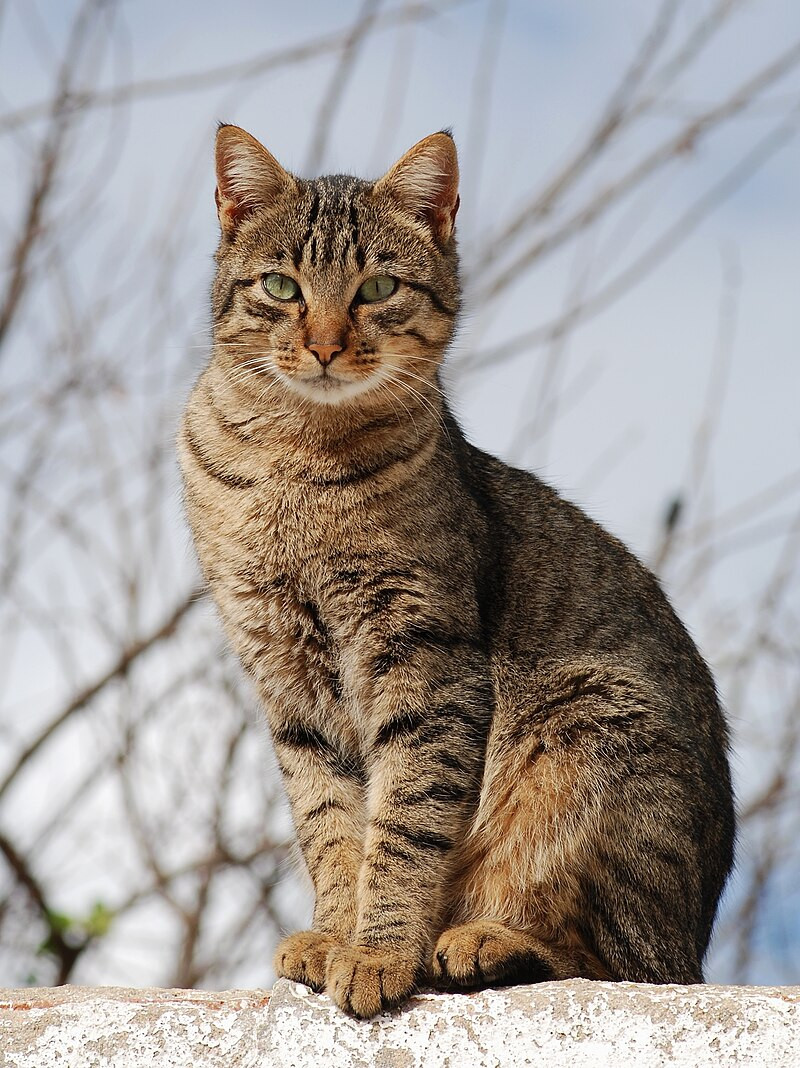When faced with unwanted behaviors from our feline companions, the question “How Do You Punish A Cat?” might cross your mind. It’s a natural human reaction to seek ways to correct actions we perceive as negative. However, when it comes to cats, traditional punishment is not only ineffective but can also be detrimental to your relationship and your cat’s well-being. Instead of focusing on punitive measures, understanding why punishment fails and exploring humane, effective alternatives is key to fostering a harmonious home.
Why Traditional Punishment Fails Cats
The idea of punishing a cat often stems from a misunderstanding of feline behavior and learning. Unlike dogs, who are often motivated by a desire to please their owners and operate within a pack hierarchy, cats are more independent and react differently to discipline. Here’s why yelling, hitting, or using physical deterrents simply doesn’t work:
- Misinterpretation and Fear: Cats do not associate punishment with their actions in the way humans do. They are more likely to link the punishment with you – the punisher – creating fear and anxiety around your presence. This can lead to a breakdown in trust and a stressed, fearful cat, rather than a well-behaved one.
- Behavior Suppression, Not Learning: Punishment might temporarily stop a behavior in your presence, but it doesn’t teach your cat what to do instead. As soon as you’re not around, the unwanted behavior is likely to return. Imagine yelling at your cat for jumping on the kitchen table. They might jump down when you shout, but they haven’t learned why they shouldn’t be there or what they should do instead.
- Damage to Your Bond: Trust is the cornerstone of any good relationship, especially with a pet. Punishment erodes this trust. Your cat may become withdrawn, fearful, or even aggressive towards you if they associate you with negative experiences. This creates a stressful environment for both of you.
- Focus on Symptoms, Not Causes: Unwanted behaviors often have underlying reasons. Is your cat scratching the furniture? It could be due to stress, lack of appropriate scratching posts, or territorial marking. Punishment only addresses the symptom (scratching), not the cause.
 Cat looking curious and slightly confused
Cat looking curious and slightly confused
Instead of resorting to methods that can harm your relationship with your feline friend, let’s delve into more constructive and compassionate approaches. Drawing inspiration from animal behavior experts like Karen Pryor, author of Don’t Shoot the Dog, we can explore a range of techniques that are not only more effective but also strengthen the bond between you and your cat.
Exploring Humane and Effective Alternatives: Beyond Punishment
Karen Pryor, a pioneer in clicker training and positive reinforcement, outlines eight methods for dealing with unwanted behaviors in her influential book. While not all are ideal for pet owners seeking a compassionate approach, understanding them provides a valuable framework. Let’s examine these methods, reframing them in the context of cat behavior and focusing on the more humane and effective options:
Less Desirable Methods (To Be Avoided):
- “Shoot the Animal” (Elimination): This drastic “solution” is obviously inhumane and unacceptable for pet owners. In the context of a cat on the kitchen table, this would mean getting rid of the cat entirely. This is not a method to consider.
- Punishment: As discussed, punishment is largely ineffective and harmful. Pryor herself notes that it “almost never really works.” In the table example, this would be striking or chasing the cat, inducing fear and confusion. This method should be avoided.
- Negative Reinforcement: This involves removing something unpleasant when a desired behavior occurs. While technically not “punishment” in the traditional sense, it still relies on aversion. For table jumping, this could be placing sticky tape on the table. While it might deter the cat from jumping on the table, it doesn’t teach them what to do and can be stressful. It’s a less desirable approach compared to positive methods.
- Extinction (Ignoring): This involves ignoring the unwanted behavior, hoping it will eventually disappear. For table jumping, this means ignoring the cat on the table. While harmless, it’s often ineffective for behaviors like table jumping, as the cat is still rewarded by the environment (height, exploration). It’s also frustrating for owners.
Humane and Effective Methods (Focus On These):
-
Train an Incompatible Behavior: This is a highly effective and positive method. It involves training your cat to perform a behavior that is incompatible with the unwanted one. For table jumping, you could train your cat to sit on a designated chair for treats and attention. This provides an alternative, desirable behavior and fulfills the cat’s needs in an acceptable way. This method is proactive and builds a positive association.
-
Put the Behavior on Cue: This elegant method involves teaching your cat to perform the unwanted behavior on command, and then simply not giving the command. For table jumping, you could train your cat to jump on the table when you say “table up” and jump down when you say “table down.” You then control when the behavior happens and can prevent it at other times. This method provides mental stimulation and control.
-
“Shape the Absence” (Reward Alternatives): This kindly method focuses on reinforcing any behavior that is not the unwanted behavior. For table jumping, you would reward your cat for being on the floor or on acceptable surfaces. This encourages the desired absence of the unwanted behavior by positively reinforcing alternatives. This requires consistency and observation.
-
Change the Motivation: This is the most fundamental and compassionate approach. It involves understanding why your cat is exhibiting the unwanted behavior and addressing the underlying motivation. For table jumping, cats might do it to seek food or a high vantage point. By putting food away and providing higher, more appealing alternatives like cat trees, you remove the motivation for table jumping. This method is preventative and addresses the root cause.
The Power of Positive Reinforcement in Cat Training
The most effective and humane methods for modifying cat behavior revolve around positive reinforcement. This involves rewarding desired behaviors to make them more likely to occur in the future. Positive reinforcement is not about punishment; it’s about building a positive relationship and communication system with your cat.
How to Use Positive Reinforcement:
- Identify Desired Behaviors: Determine what you want your cat to do instead of the unwanted behavior.
- Use Rewards: Find what motivates your cat – treats, praise, toys, petting. Use these rewards immediately after your cat performs the desired behavior.
- Be Consistent: Reward the desired behavior every time it occurs, especially in the beginning stages of training.
- Clicker Training (Optional): A clicker can be a valuable tool. It creates a clear, consistent marker signal that tells your cat exactly when they have performed the desired behavior and a reward is coming.
- Patience and Understanding: Training takes time and patience. Celebrate small successes and understand that setbacks are part of the process.
Understanding Your Cat’s Motivation: The Key to Long-Term Success
Ultimately, understanding why your cat behaves in a certain way is crucial for effective and lasting behavior modification. Instead of simply reacting to unwanted behaviors with punishment, take the time to observe and understand your cat’s perspective.
- Environmental Enrichment: Ensure your cat’s environment is stimulating and meets their needs. Provide scratching posts, climbing opportunities, toys, and playtime to prevent boredom and stress-related behaviors.
- Address Underlying Needs: If your cat is jumping on counters for food, store food properly and feed them regular meals. If they seek high places, provide cat trees and shelves.
- Veterinary Check-up: Rule out any underlying medical issues that could be contributing to behavioral changes.
Conclusion: Choose Compassion and Understanding Over Punishment
While the question “how do you punish a cat?” might be a starting point, the answer should always lead to exploring humane and effective alternatives. Punishment is not only ineffective and potentially harmful but also damages the precious bond you share with your feline companion.
By embracing positive reinforcement, understanding your cat’s motivations, and focusing on creating a stimulating and enriching environment, you can guide your cat towards desired behaviors while fostering a relationship built on trust and mutual respect. Choose compassion, patience, and understanding, and you’ll find that you and your cat can live together in harmony, without resorting to ineffective and unkind methods like punishment.


